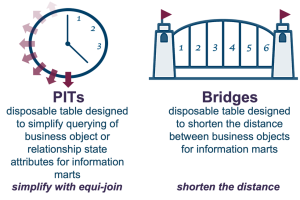
WASHINGTON, June 10, 2014 – In spite of press reports to the contrary, U.S. broadband coverage is not falling behind European levels of service, academic Christopher Yoo said on Wednesday at the National Press Club.
“It seems like every other week there’s a new infographic or news story that talks about how the U.S. is falling behind in broadband speeds, we don’t have fiber to the home, and telecom companies are rolling in the profits while consumer prices soar,” said Doug Brake, telecommunications policy analyst with The Information Technology and Innovation Foundation, setting up the topic tackled in by Yoo in his presentation.
On the contrary, said Yoo, the founding director of the Center for Technology, Innovation and Competition, the U.S. led in many broadband metrics in 2011 and 2012. And, he said, it is precisely the absence of a “one size fits all” regulatory structure that has been been driving technological innovation forward in the marketplace.

In other words, according to Yoo, the American approach to facilities-based competition – where cable companies and telephone companies compete through rival communications networks –has succeeded.
While the findings may be “surprising” to some, Yoo said they proved the importance of examining the best approach to broadband regulation based on “real world data.”
The notion that “fiber is the only answer” to affordable high-speed broadband is a misconception, he said. Countries emphasizing fiber over rival technologies – including Sweden and France – were among the worst broadband performers.
In the U.S., 82 percent of households received broadband at speeds of at least 25 Megabits per second (Mbps), versus 54 percent in Europe. In rural areas, the difference was even greater: 48 percent in the U.S., versus 12 percent in Europe. The five countries that did beat U.S. coverage of greater than 25 Mbps (including Denmark and the Netherlands) are compact, urbanized regions with greater population densities.

Additionally, even looking at fiber-based technologies, the U.S. is outperforming Europe, he said. Fiber coverage in the U.S. went from 17 percent in 2011 to 23 percent in 2012. In Europe, fiber coverage went from 10 percent in 2011 to 12 percent in 2012.
And, based on the measurement of telecommunications investment per household, the U.S. number is more than double that of Europe: $562 versus $244 in the old world.
And, he said, American users consumed 50 percent more bandwidth than Europeans in 2011 and 2012.
“The best measure of how much a network is really worth is how much you use it,” Yoo said. “It’s great to have a very fast car, but unless you use it, it’s not really doing very much for you.”
One area where the U.S. could see improvement is in the area of broadband adoption, Brake said. That demonstrates continued need to demonstrate value in broadband for consumers.
Yoo agreed: “Availability is only a part of the question. There are plenty of people who have broadband available to them who are choosing not to adopt.”
Moderator Gerry Faulhaber added: “As regulators, we can mandate coverage, we can mandate buildout. What we can’t do is mandate people to use it.”
Keeping a series of tiered rates for broadband service is exactly what America’s broadband rollout needs, said Brake. That not only encourages consumers to purchase internet at lower introductory rates, it also efficiently places the burden on those who wish to pay more for higher-speed service. This helps to recuperate costs for networks.
“Is it better to provide 75 to 100 Mbps to 80 to 90 percent of the population, or one Gigabit per second to 10 to 20 percent of the population?”
Blair Levin, former director of the FCC’s National Broadband Plan, and now communications a science fellow at the Aspen Institute, said that comparisons with Europe doesn’t change America’s objective to build deeper fiber, use broadband to improve the delivery of goods and services, and connect more users.
“Which activity is more productive – looking at oneself in the mirror and asking, ‘do these jeans make me look fat?’ or going to the gym? Focusing on actions that improve one’s condition is better than wondering about how one should appear relative to others,” said Levin.



